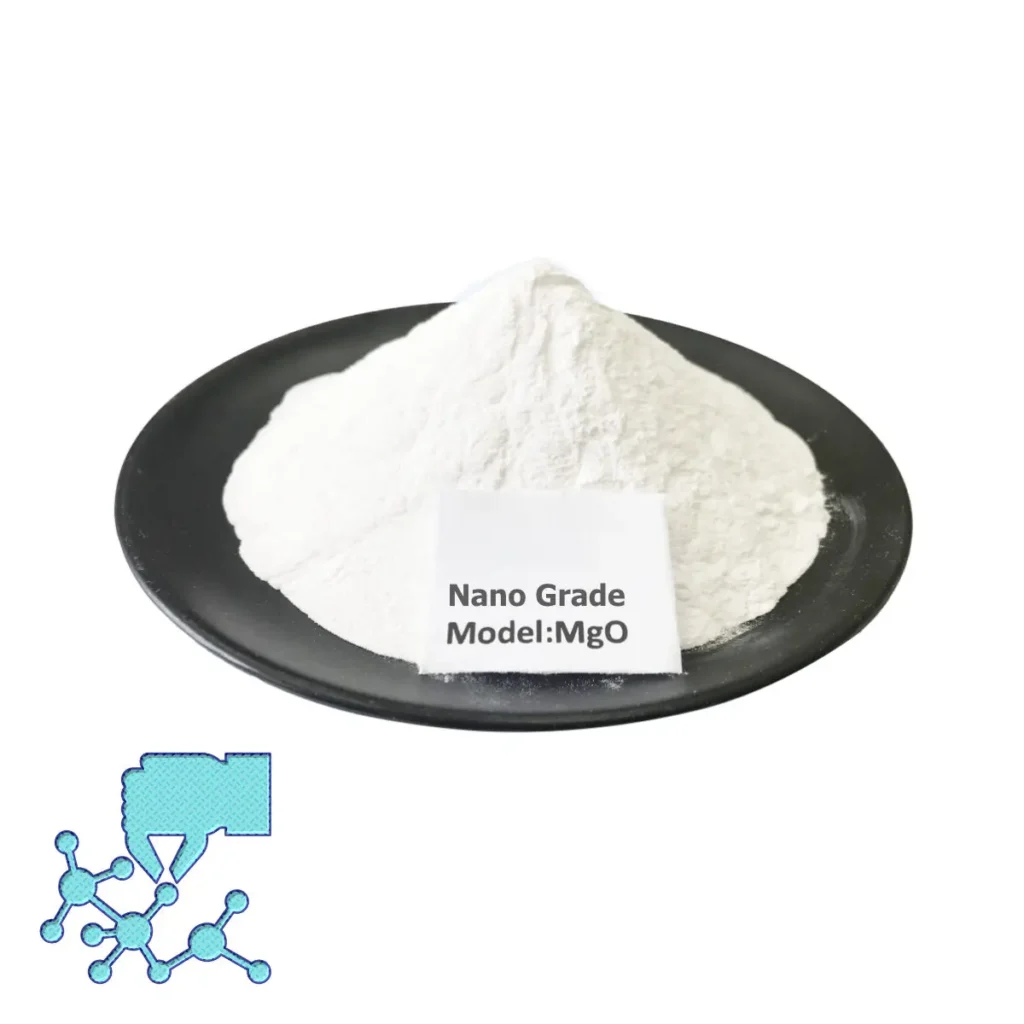Nano-magnesium oxide, as an important inorganic nano-materials, because of its unique physicochemical properties, in catalysts, ceramic materials, optical materials, coatings, biomedicine and environmental protection and other fields show a wide range of application prospects. Messi Biology aims to discuss the preparation process of nano-magnesium oxide, analyze its technical principles, common methods, advantages and disadvantages, as well as future development trends.
First, the nature and application of nano-magnesium oxide overview
Nano-magnesium oxide (Nano-MgO) has a high specific surface area, good thermal stability, excellent catalytic activity and adsorption properties, these characteristics make it in many areas of favor. In the field of catalysts, nano-MgO can be used as a carrier or active component to significantly improve the catalytic efficiency; in ceramic materials, it can improve the mechanical properties and thermal stability of the material; in the field of optics, its unique light transmittance and refractive index modulation ability provides the possibility of the development of new types of optical components; and in the field of biomedicine, nanomagnesium oxide has become an important component of drug In biomedicine, due to its good biocompatibility and drug loading capacity, it has become an important part of the drug delivery system; In addition, in environmental protection, nano-magnesium oxide is also used for the adsorption of heavy metal ions and the purification of harmful gases.
Second, the preparation process of nano-magnesium oxide
2.1 Physical method
Physical method mainly includes mechanical ball milling method, vapor phase deposition method and laser evaporation method. Among them, the mechanical ball milling method through high-energy ball milling micron magnesium oxide particles refined to the nanometer level, the method is simple to operate, but high energy consumption and easy to introduce impurities. Vapor phase deposition method evaporates the magnesium source at high temperature and subsequently condenses in an inert gas to form nanoparticles, which has high purity but complex equipment and high cost. The laser evaporation method utilizes a laser beam to instantaneously evaporate the target material to generate nanoparticles, which has the advantages of high efficiency and purity, but the equipment is expensive and suitable for small-scale laboratory preparation.
2.2 Chemical method
Chemical method is the current mainstream method for the preparation of magnesium oxide nanoparticles, including sol-gel method, precipitation method, hydrothermal method and microemulsion method.
Sol-gel method: through the hydrolysis of metal alcohol salts or inorganic salts, condensation reaction to form a sol, and then after aging, drying, calcination to get magnesium oxide nanoparticles. The nanoparticles prepared by this method have good dispersion and controllable particle size, but the process is complicated and the cost is high.
Precipitation method: take soluble magnesium salt as raw material, make magnesium ions precipitated in the form of magnesium hydroxide by adding precipitant (such as sodium hydroxide, ammonia, etc.), and then transformed into magnesium oxide nanoparticles by washing, drying and calcination. The method is simple, low cost, easy to industrialize production, but the particle morphology and particle size distribution control is relatively difficult.
Hydrothermal method: under high temperature and high pressure, water is used as solvent and reaction medium to induce the precursor (e.g. magnesium hydroxide) to undergo dissolution – recrystallization process to generate nano-magnesium oxide. Hydrothermal method is able to prepare nanoparticles with high purity, high crystallinity and uniform particle size distribution, but the equipment requirements are high and energy consumption is high.
Microemulsion method: the use of two mutually insoluble solvents in the role of surfactants to form a microemulsion system, as a reaction micro-environment, so that the nucleation, growth process is limited to tiny droplets within the process, so as to obtain a uniform particle size of magnesium oxide nanoparticles. This method has mild conditions and is easy to control the particle morphology and particle size, but the subsequent processing is complicated and the yield is low.
Third, the advantages and disadvantages of the preparation process of magnesium oxide nanoparticles analysis
Advantages:
Controllable particle size: by adjusting the parameters of the preparation process, precise control of the particle size of magnesium oxide nanoparticles can be realized.
High purity: part of the chemical method of preparation of magnesium oxide nanoparticles with high purity, suitable for applications with high purity requirements.
Adjustable morphology: some methods such as microemulsion method can prepare a specific morphology of the nano-magnesium oxide, to meet the needs of specific applications.
Disadvantages:
Cost issues: some preparation processes such as vapor phase deposition method, laser evaporation method, etc. are costly and difficult to promote on a large scale.
Process complexity: certain chemical method preparation process is complex, involving multi-step reaction and fine control, with high requirements for operators.
Environmental pollution: some of the solvents and reagents used in the preparation process may cause pollution to the environment, effective measures need to be taken to control.
IV. Future Development Trends
With the continuous development of nanotechnology, the preparation process of magnesium oxide nanoparticles will also be optimized and innovated. In the future, the following aspects may become research hotspots:
1. Green preparation: develop environmentally friendly preparation process, reduce or eliminate the emission of harmful substances, and realize sustainable development.
2. large-scale production: through process improvement and equipment upgrading, reduce production costs, improve production efficiency, realize the large-scale production of magnesium oxide nanoparticles.
3. Multifunctionalization: through doping, surface modification and other means, to give more functional properties of magnesium oxide nanoparticles, to broaden its application areas.
4. Intelligent preparation: combined with artificial intelligence, big data and other advanced technologies, to achieve intelligent control and optimization of the preparation process of nano-magnesium oxide.
In conclusion, as a nano-magnesium oxide with broad application prospects of nanomaterials, the research and development of its preparation process is of great significance to promote the scientific and technological progress and industrial upgrading in related fields.

